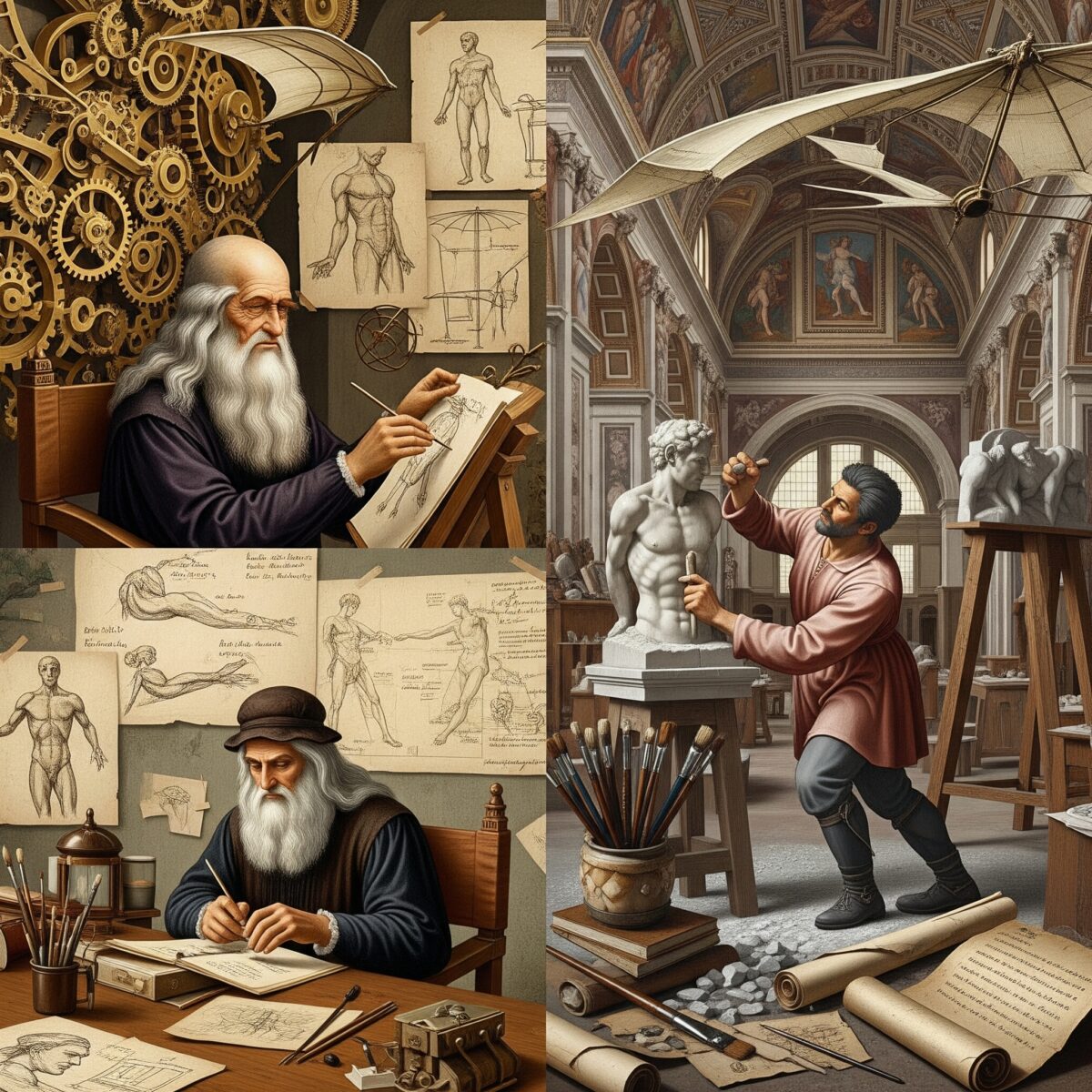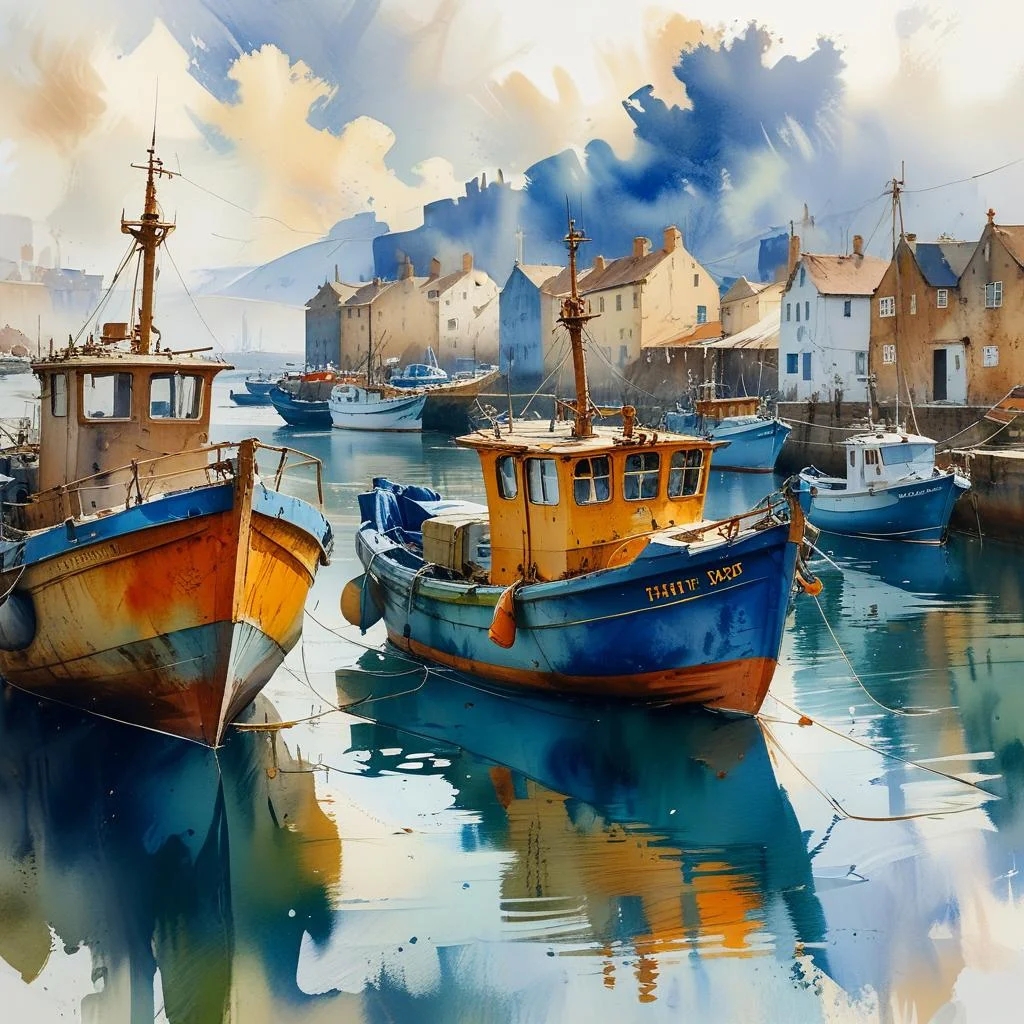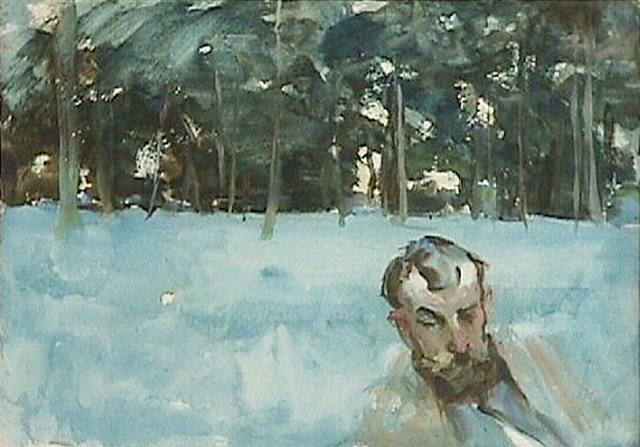The lives of famous artists have always captivated us because they show how ordinary people can create extraordinary things. From Leonardo da Vinci’s endless curiosity to Vincent van Gogh’s passionate struggles, these painters didn’t just create beautiful art—they lived remarkable lives filled with challenges, breakthroughs, and unwavering dedication. Their stories prove that creativity and perseverance can overcome almost any obstacle, inspiring countless people to pursue their own artistic dreams.
Key Points Summary
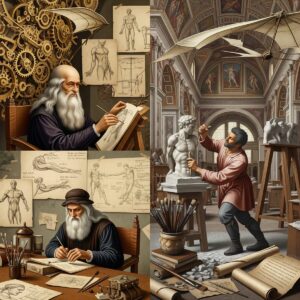
- Famous painters overcame poverty, rejection, and personal struggles to create timeless masterpieces
- Renaissance masters like Leonardo and Michelangelo combined art with science and innovation
- Impressionist pioneers revolutionized art by painting outdoors and capturing natural light
- Modern artists like Picasso and Warhol constantly reinvented themselves and their artistic styles
- These artists’ stories continue to inspire creativity and perseverance in people today
Renaissance Visionaries: The Foundation of Artistic Genius
Leonardo da Vinci: The Ultimate Creative Mind
Leonardo da Vinci wasn’t just a painter—he was a scientist, inventor, and dreamer all rolled into one. Born in 1452 in a small Italian town, Leonardo showed early signs of artistic talent. His master, Andrea del Verrocchio, reportedly stopped painting after seeing Leonardo’s angel in “The Baptism of Christ” because the student had surpassed the teacher.
What made Leonardo’s life truly inspiring was his insatiable curiosity. He filled thousands of pages with sketches of everything from flying machines to human anatomy. His understanding of sfumato technique in painting created the mysterious smile of the Mona Lisa that still captivates viewers today.
Michelangelo: Turning Stone into Life
Michelangelo Buonarroti’s story shows how dedication and perfectionism can create miracles. When he painted the Sistine Chapel ceiling, he worked lying on his back for four years, paint dripping into his eyes. He even wrote a poem about the physical agony: “My stomach pushes by force beneath my chin… My brush, above my face continually, makes it splendid by dripping down.”
Despite these challenges, Michelangelo changed history forever by proving that art could inspire religious devotion and human emotion simultaneously. His determination to finish the chapel, even when Pope Julius II threatened him, demonstrates the perseverance that defines great artists.
Impressionist Pioneers: Painting Life as They Saw It
Claude Monet: The Master of Light
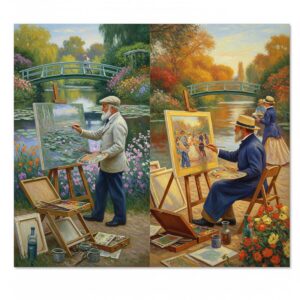
Claude Monet’s artistic journey began with rejection. The traditional French art establishment mocked his loose brushstrokes and bright colors. Critics called his work “Impression, Sunrise” unfinished, accidentally giving the entire Impressionist movement its name.
Monet’s breakthrough came when he started painting outdoors, capturing how light changed throughout the day. His mastery of impressionism light techniques transformed how we see ordinary subjects like water lilies and haystacks. Even when cataracts clouded his vision in later years, he continued painting, creating some of his most beloved works.
Pierre-Auguste Renoir: Joy Despite Pain
Renoir’s life story proves that creativity can flourish even in difficult circumstances. In his later years, severe arthritis made holding a paintbrush agony. Brushes had to be tied to his hands, yet he painted some of his most joyful works during this period.
“The pain passes, but the beauty remains,” Renoir once said, perfectly capturing the spirit that drove him to keep creating. His determination to understand what is impressionism and push its boundaries, even while suffering, shows how true artists find ways to overcome physical limitations.
Post-Impressionist Revolutionaries: Emotion Over Realism
Vincent van Gogh: Passion Through Struggle
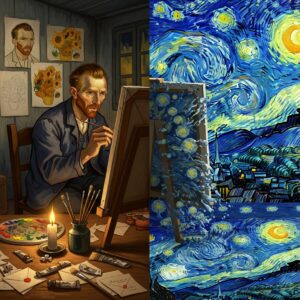
Perhaps no artist’s life better demonstrates creative perseverance than Vincent van Gogh’s. He sold only one painting during his lifetime and struggled with mental health challenges, yet he created nearly 900 paintings and 1,100 drawings in just 10 years.
Van Gogh’s letters to his brother Theo reveal a man who found purpose through art despite personal struggles. His top 10 most famous Van Gogh paintings show how he transformed emotional turmoil into visual poetry. His thick brushstrokes and bold colors influenced countless artists and continue to inspire people facing their own challenges.
Those interested in recreating his style can explore how to paint like Van Gogh with beginner-friendly techniques.
“I dream of painting and then I paint my dream.”
Vincent van Gogh
Paul Cézanne: The Patient Revolutionary
Cézanne’s story teaches us about the power of persistence. Rejected by art schools and mocked by critics for decades, he continued developing his unique approach to color and form. His patient observation of Mont Sainte-Victoire, which he painted over 60 times, shows how dedication to a single subject can unlock artistic breakthroughs.
His geometric approach to painting laid the groundwork for modern art movements, proving that sometimes the most revolutionary ideas need time to be understood and appreciated.
Modern Art Innovators: Breaking All the Rules
Pablo Picasso: Constant Reinvention
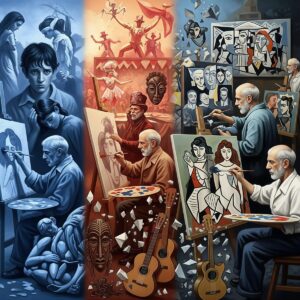
Picasso’s artistic journey spans multiple decades and styles, showing how famous artists and their styles can evolve dramatically over time. From his melancholy Blue Period to revolutionary Cubism, Picasso never stopped experimenting.
What makes Picasso’s life truly inspiring is his fearlessness in abandoning successful styles to try something completely new. When he co-created Cubism, he knew it would shock the art world. His willingness to risk failure for the sake of innovation shows the courage required for artistic breakthroughs. Modern readers can learn more about Pablo Picasso as a revolutionary artist and discover what is cubism through accessible explanations.
Henri Matisse: Bold Color Experiments
Matisse’s journey from traditional academic painting to Fauvism demonstrates how artists must sometimes break rules to find their voice. When critics called his wild colors and loose brushwork “fauve” (wild beast), Matisse embraced the label and continued pushing boundaries.
His art style influenced generations of artists who learned that color could express emotion as powerfully as realistic representation.
Contemporary Icons: Art Meets Modern Life
Andy Warhol: From Commercial Art to Pop Culture
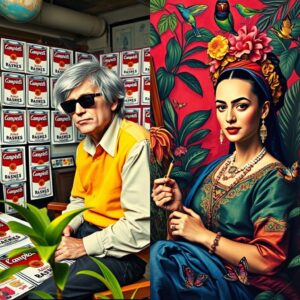
Warhol’s transformation from commercial illustrator to pop art icon shows how artists can find inspiration in everyday life. His style of fame, repetition and the everyday turned Campbell’s soup cans and celebrities into high art.
Warhol’s Factory studio became a meeting place for artists, musicians, and writers, proving that creativity flourishes in collaborative environments. His ability to see art in mass-produced objects changed how we think about 20th century art movements.
Frida Kahlo: Transforming Pain into Power
Kahlo’s life story demonstrates how personal struggles can fuel artistic expression. After a bus accident left her bedridden, she began painting self-portraits using a mirror mounted above her bed. Her physical pain and emotional experiences became the foundation for powerful artwork that continues to inspire people worldwide.
Her success as one of the most recognizable women in art proves that authentic artistic expression can overcome any obstacle.
Learning from the Lives of Famous Artists
These biographical stories of master painters share common themes that can inspire anyone pursuing creative goals. Whether facing poverty like many famous artists in poverty, dealing with criticism, or overcoming personal challenges, these artists found ways to keep creating.
Modern artists can learn from these examples by developing their own strategies for overcoming creative blocks and following essential tips from the artist’s playbook.
Why These Stories Matter Today
The lives of famous artists continue to resonate because they show us that creativity, combined with perseverance, can overcome seemingly impossible obstacles. From Renaissance masters who combined art with science to modern painters who found beauty in everyday objects, these artists prove that dedication to one’s vision can create lasting impact.
Understanding why art matters helps us appreciate not just the finished masterpieces, but the human stories behind them. These painter biographies remind us that behind every great work of art is a person who refused to give up on their creative dreams, no matter how difficult the journey became.
Frequently Asked Questions
What challenges did famous painters face? Famous painters faced poverty, rejection from art establishments, mental health struggles, physical disabilities, and social criticism. Many sold few paintings during their lifetimes but continued creating because of their passion for art.
How did famous artists become successful? Most famous artists became successful through persistent practice, developing unique styles, finding supportive communities, and continuing to create despite setbacks. Success often came after years of dedication and experimentation.
What inspired great painters to create art? Great painters found inspiration in nature, human emotions, social issues, personal experiences, and spiritual beliefs. Many were driven by an inner need to express themselves visually and communicate ideas through their art.
Which famous painters had difficult childhoods? Many famous painters, including Picasso, Monet, and van Gogh, faced challenging childhoods with family struggles, financial hardship, or early loss of parents. These experiences often influenced their artistic development and subject matter.
How did famous artists develop their unique styles? Artists developed unique styles through years of experimentation, studying other artists’ work, responding to their environment and experiences, and gradually finding their own visual language to express their ideas and emotions.
Ready to start your own artistic journey? Explore our comprehensive guides on how to appreciate art and discover famous artist styles for beginners to begin developing your own creative voice.

